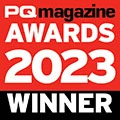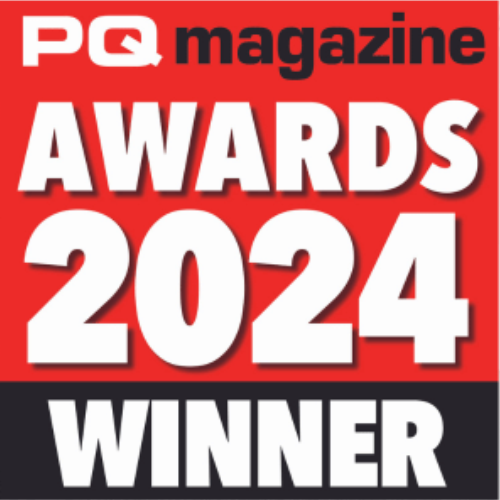Gateway Qualifications Level 2 Award in Digital Graphics
In this unit learners will develop an understanding of the different types of digital graphics and how they are used. They will research and plan design ideas in response to a client brief and learn how to manipulate digital graphics using photo and vector editing techniques to create bitmap and vector graphics for specific purposes. This unit also allows learners to obtain feedback on their work for review and further development.
Unit Learning Outcomes
- Purpose: learners should investigate a range of digital graphics in both print and electronic format e.g. magazine covers, adverts, posters, cartoons, web images and graphics logos, signs, posters, packaging, web graphics, engineering drawings, manuals, imagery in movies and computer game etc and how they are used to communicate, invoke emotion, educate, advertise, promote, inform, entertain different audiences (e.g. age, gender, interest, need) etc.
- Features: bitmap image (photograph), or vector graphic text (logo), composition, use of colour and texture, size and position, characters and objects, file type and sizes, resolution.
- Bitmap or (raster): images are stored as a series of tiny dots called pixels, depict lifelike images, larger file sizes, enlargement can reduce quality (pixelated/blocky).
- Vector: consists of shapes, curves, lines, and text, used for abstract art such as logos, more scalable, smaller file sizes.
- File formats, e.g. jpeg, bmp, png, eps, wmf, pdf, proprietary formats, file compression, lossy and lossless, screen and print resolutions, storing and retrieving files, e.g. saving, import and export to other formats, file size considerations.
- Properties of images sourced from digital cameras, scanners, internet and photo libraries, to include pixel dimensions, resolutions and suitability for use in creating graphics.
- Properties of bitmap/raster images and vector based graphics, the use of colour, composition and layout.
- Factors that influence: audience, purpose, output (print/digital), use/organisation of graphic elements, cost, resource availability, legal responsibilities (accessibility).
Assessment Criteria
- 1.1 Describe the purpose and features of bitmap and vector digital graphics.
- 1.2 Explain the factors that influence design, layout and properties of digital graphics.
- 1.3 Describe how file format, compression, image resolution and colour depth affect file size and image quality.
AC 2.1:
- The client brief should direct learners to produce both bitmap and a vector graphics to allow them to think about the creative aspects of the graphics (typography, colour and composition) as well as the technical in relation to photo-editing and vector-editing.
- Consideration of the purpose of the digital graphics learners will create by reviewing client brief when creating a design, the context in which the product will be used, target audience, what it is marketing or selling, what is the message to be communicated, style and tone of product delivery, e.g. humorous, formal, classic, youthful.
- Develop ideas using traditional drawing and recording skills to produce visuals for their digital graphics, research sources of information, to include: primary sources, e.g. observation drawings, varied textures, patterns, use of photography, secondary sources, e.g. books,magazines, internet imagery.
- Develop ideas for how the digital graphics will be used, for example, 2D digital publishing graphics, e.g. emagazines, DVD covers, promotional materials, moving image – motion graphics, e.g. title sequences for films, television, websites, e.g. educational, corporate,entertainment, digital 2D game, e.g. titles sequences, interface design for PC, handheld, consoles or mobile gaming.
- Identify and record sources of ready-made graphics/images, with permissions and implications of use in creating graphics (AC 2.3)
AC 2.2:
- Digital/traditional drawing techniques and mark-making skills, to include: using lines in a design, inserting different shapes, form and appearance of the design, using rendering techniques, adding shading to a design, using colour to enhance a design, creating an appropriate scale and perspective of design, using appropriate proportions to show visual relationships, creating focal points.
AC 2.3:
- Understanding of copyright and intellectual property law in relation to creative works, obtaining permission, acknowledging sources/referencing.
Assessment Criteria
- 2.1 Research and produce design ideas.
- 2.2 Explore drawing techniques.
- 2.3 Describe the legal restrictions for all images and graphics whether ready-made or created.
AC 3.1:
- Digital tools and manipulation techniques: cropping, rotating, brightness/contrast, levels, colour adjustment, cloning, retouching, red eye removal, apply effects, filters, selections, use of layers, text, rendering, shadows, proportion, texture use, picking stock images, combining and merging multiple images, colour blending, extracting parts of images and combining, changing background colours.
- Bitmap (photo-editing): scanning techniques and importing drawings, importing photographs, using image manipulation techniques such as: selecting, e.g. marquee, lasso, magic wand, save selections, copy, paste, drag and drop techniques, inserting colour, paintbrushes, bucket, opacity/transparency of colours and/or images, making effective adjustments to images, transforming images, layers and layer modes of designs, image filters, image cropping techniques, history of graphic use, flattening and merging layers.
- Vector: drawing tools, e.g. pen, inserting text, using vector shapes, using paths to make shapes, outlining images, transformation of images, layering multiple images, using different image effects, paintbrushes, bucket, opacity/transparency of images.
- Appropriate file format: for print, screen or web, e.g. bmp, png, gif, tif, jpg, psd, ai, swf, flv, use of compression (lossy, lossless), appropriate size and image resolution, different colour modes, e.g. RGB, CMYK, file extensions.
Assessment Criteria
- 3.1 Create and prepare assets for digital graphics.
- 3.2 Create digital graphics using photo-editing and vector-editing tools and techniques.
- 3.3 Save digital graphics in appropriate pixel dimension and resolution.
AC 4.1:
- Learners should review the digital graphics against the client brief and obtain feedback on the quality of finished product and its fitness for purpose, the review should identify positives and negatives relating to the digital graphics, rather than the creation process.
- Learner should include reflections on the digital graphics (strengths and areas for development), taking into account user feedback, own self-assessment, feedback from others (peers, tutors).
- Suggested improvements to own work: more efficient or effective ways of working, ways to improve the design and prototype, develop own digital skills, planning, production, time management, etc.
Assessment Criteria
- 4.1 Review digital graphics with client to obtain feedback, making refinements where necessary.
- 4.2 Explain how the digital graphics meet the client brief and how own performance could be developed.
FAQs
This qualification will equip you with a foundational understanding of digital graphics, covering both bitmap and vector image types. You'll explore their purposes, features, and how they are used in various media. You'll also learn about design principles, planning, creation using industry-standard tools, file formats, and how to review and refine your work based on a client brief.
The Gateway Qualifications Level 2 Award in Digital Graphics provides a solid foundation in the principles and practices of digital graphics. This can be beneficial for entry-level roles or further study in areas such as graphic design, web design, digital marketing, and other creative industries that utilize visual communication.
You will likely work on projects that involve creating both bitmap and vector graphics in response to a client brief. This could include tasks such as photo editing, logo design, creating graphics for web or print, and learning how to prepare your graphics for different outputs.

This course includes:
- Creative Activities, Lectures and more
- Masters level Course Content with Hands-on Training
- Multiple Projects to test your skills upon
- Join the leading Industry with over 20 billion Pounds of investment
- Online Practical Training
- Flexible Payment Structure
- CV Support







